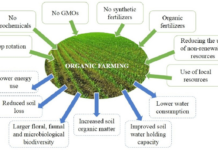Perceived water crises are occurring world wide as short hydrological cycles are collapsing in ecosystems in all regions of the planet. The role of water in its cooling effects of soil, plants and landscapes amidst rising global temperatures is often poorly understood or completely ignored. Water is not supposed to move along the surfaces of the planet. It is the currency of life above and below the surface of our ecosystems. It is supposed to be held and absorbed in order to feed sub-surface life and then be released to flow, all the while working with all species of life to move nutrients, regulate temperatures and then cycle back again. In many parts of Africa, this cycle has been disrupted and impacts the interconnected relationships glued together by water.
During my time with the Danish Refugee Council (DRC) as the Regional Livelihoods Coordinator for East Africa and Yemen, and then as the Global Advisor for Regenerative Resilience and Circular Bio-economy, I worked with our teams around the world to highlight and conduct trainings on the numerous opportunities we had within our remit of providing support to communities in forced displacement to bring nature positive solutions to our programs as well as operations. One example of this was the DANIDA funded project entitled Northern Uganda Resilience Initiative (NURI). The project was initially envisioned to provide standard rural infrastructure in support of farmers who were encouraged to do chemical mono-cropped farming with support of the project. The program was a multi-year and multi-million dollar initiative addressing 12 districts of northern Uganda. When I recognised the resources and vision, I knew we could do better and spent years leading the project team on integration of regenerative approaches from passive water harvesting in the landscape, road water harvesting, establishment of food forests instead of “wood lots” and redefining how the project would install dams across the country. The dams were standard valley tanks with no aspects of design to capture more water or help infiltrate for sub-irrigation. Where necessary, I engaged global experts including Warren Brush with whom we co-trained project staff, government engineers. The project initially outlined establishment of spring boxes to protect natural springs from erosion but there was no thought of recharging the springs. As part of these trainings, we integrated the concepts of spring recharge, demonstrating how ecological restoration can capture, store and infiltrate water and should be integrated in to sub-surface water harvesting which occurs regularly in the humanitarian context. I produced this video to show how this can be done with simple engineering in combination with agro-ecological and agroforestry systems.
Now, as an independent consultant, I support DRC, UN agencies and other international NGOs to bring the concepts of regenerative design for climate action so that more actors, policy makers and donors have stronger understanding of how we can build real resilience through design thinking. Each year, droughts like the one in Somalia and floods like in South Sudan prove over and over again that hydrological and nutrient collapse will continue to cause more disasters leading to increased forced displacement. We can change this. No gimmicks, just pure natural function. Let’s get to work.













